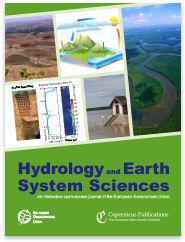Herndon et al., 2015
Landscape heterogeneity drives contrasting concentration-discharge relationships in shale headwater catchments
Herndon EM, Dere AL, Sullivan PL, Norris D, Reynolds B, and Brantley SL (2015)
Hydrology and Earth Systems Sciences, vol 19:3333–3347
-
Shale Hills, INVESTIGATOR
-
Shale Hills, INVESTIGATOR, COLLABORATOR
-
Calhoun, Shale Hills, INVESTIGATOR, COLLABORATOR
-
National, Eel, Luquillo, Shale Hills, INVESTIGATOR, COLLABORATOR
Abstract
Solute concentrations in stream water vary with discharge in patterns that record complex feedbacks between hydrologic and biogeochemical processes. In a comparison of three shale-underlain headwater catchments located in Pennsylvania, USA (the forested Shale Hills Critical Zone Observatory), and Wales, UK (the peatland-dominated Upper Hafren and forest-dominated Upper Hore catchments in the Plynlimon forest), dissimilar concentration–discharge (C–Q) behaviors are best explained by contrasting landscape distributions of soil solution chemistry – especially dissolved organic carbon (DOC) – that have been established by patterns of vegetation and soil organic matter (SOM). Specifically, elements that are concentrated in organic-rich soils due to biotic cycling (Mn, Ca, K) or that form strong complexes with DOC (Fe, Al) are spatially heterogeneous in pore waters because organic matter is heterogeneously distributed across the catchments. These solutes exhibit nonchemostatic behavior in the streams, and solute concentrations either decrease (Shale Hills) or increase (Plynlimon) with increasing discharge. In contrast, solutes that are concentrated in soil minerals and form only weak complexes with DOC (Na, Mg, Si) are spatially homogeneous in pore waters across each catchment. These solutes are chemostatic in that their stream concentrations vary little with stream discharge, likely because these solutes are released quickly from exchange sites in the soils during rainfall events. Furthermore, concentration–discharge relationships of non-chemostatic solutes changed following tree harvest in the Upper Hore catchment in Plynlimon, while no changes were observed for chemostatic solutes, underscoring the role of vegetation in regulating the concentrations of certain elements in the stream. These results indicate that differences in the hydrologic connectivity of organic-rich soils to the stream drive differences in concentration behavior between catchments. As such, in catchments where SOM is dominantly in lowlands (e.g., Shale Hills), we infer that nonchemostatic elements associated with organic matter are released to the stream early during rainfall events, whereas in catchments where SOM is dominantly in uplands (e.g., Plynlimon), these non-chemostatic elements are released later during rainfall events. The distribution of SOM across the landscape is thus a key component for predictive models of solute transport in headwater catchments.
Citation
Herndon EM, Dere AL, Sullivan PL, Norris D, Reynolds B, and Brantley SL (2015): Landscape heterogeneity drives contrasting concentration-discharge relationships in shale headwater catchments. Hydrology and Earth Systems Sciences, vol 19:3333–3347. DOI: 10.5194/hess-19-3333-2015
 This Paper/Book acknowledges NSF CZO grant support.
This Paper/Book acknowledges NSF CZO grant support.
Explore Further





